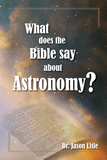
Short-Lived Comets
Best Evidences From Science That Confirm a Young Earth
A comet spends most of its time far from the sun in the deep freeze of space. But once each orbit a comet comes very close to the sun, allowing the sun’s heat to evaporate much of the comet’s ice and dislodge dust to form a beautiful tail. Comets have little mass, so each close pass to the sun greatly reduces a comet’s size, and eventually comets fade away. They can’t survive billions of years.
Two other mechanisms can destroy comets—ejections from the solar system and collisions with planets. Ejections happen as comets pass too close to the large planets, particularly Jupiter, and the planets’ gravity kicks them out of the solar system. While ejections have been observed many times, the first observed collision was in 1994, when Comet Shoemaker-Levi IX slammed into Jupiter.
Given the loss rates, it’s easy to compute a maximum age of comets. That maximum age is only a few million years. Obviously, their prevalence makes sense if the entire solar system was created just a few thousand years ago, but not if it arose billions of years ago.
Rescuing Devices
Evolutionary astronomers have answered this problem by claiming that comets must come from two sources. They propose that a Kuiper belt beyond the orbit of Neptune hosts short-period comets (comets with orbits under 200 years), and a much larger, distant Oort cloud hosts long-period comets (comets with orbits over 200 years).
Yet there is no evidence for the supposed Oort cloud, and there likely never will be. In the past twenty years astronomers have found thousands of asteroids orbiting beyond Neptune, and they are assumed to be the Kuiper belt. However, the large size of these asteroids (Pluto is one of the larger ones) and the difference in composition between these asteroids and comets argue against this conclusion.
Answers Magazine
October – December 2012
God’s Word clearly teaches that the earth is young, and the evidence powerfully confirms it. So don’t miss this issue of Answers, which brings you up to speed on the ten best evidences for a young earth. Also discover incredible new examples of the Creator’s undeniable designs, a biblical view on political activism, the latest findings on the Dead Sea scrolls, and much more!
Browse IssueRecommended Resources

Answers in Genesis is an apologetics ministry, dedicated to helping Christians defend their faith and proclaim the good news of Jesus Christ.
- Customer Service 800.778.3390
- Available Monday–Friday | 9 AM–5 PM ET
- © 2025 Answers in Genesis




